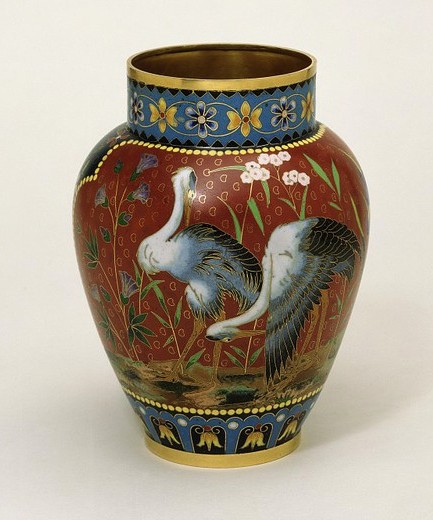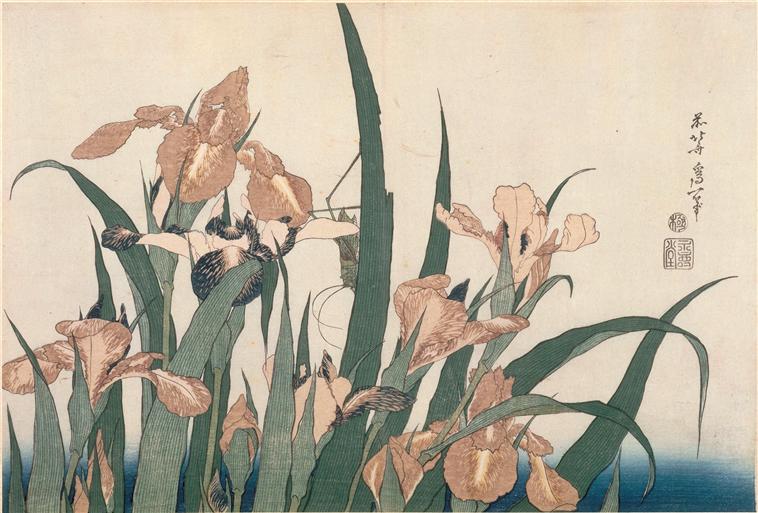A Pair of Japoniste Cloisonné Enamel and Ormolu-Mounted Vases
By Elkington & Co, circa 1876
One signed with enamelled signature E & Co and the underside stamped ELKINGTON & Co., the other signed in the enamel Elkington & Co., both stamped 337
Each vase: 13 ½ in (35.5 cm) high
cf. Geo.A.Sala, Elkington & Co. International Exhibition of 1876 Philadelphia, Descriptive Essay, 1876, p.12 – for an illustration of an identical vase
Each vase: 13 ½ in (35.5 cm) high
cf. Geo.A.Sala, Elkington & Co. International Exhibition of 1876 Philadelphia, Descriptive Essay, 1876, p.12 – for an illustration of an identical vase
Though decoration of these vases is clearly inspired by Japan, quite different techniques were used by the Elkington factory in Birmingham to create them. While Japanese enamellers used the traditional wire cloisonné method, Elkingtons made this vase by electro-deposition (electroforming), providing cavities for the enamels. The overall effect is similar to the champlevé technique, where enamel infills incised or indented metal.
Japanese art strongly influenced western goods in the late 19th century once Japan ended its self-imposed isolation of nearly two centuries. Exhibitions of Japanese art caused a sensation in London in 1862 and again in Paris in 1867. Techniques and styles used by Japanese artists and craftsmen were adapted to suit the taste of a western market, as demonstrated by the decoration of this vase.
This model was exhibited at the Centennial Exhibition in Philadelphia in 1876. Another vase of this same technique is held in the Victoria and Albert Museum. Elkington & Co were the only leading British silversmiths to show at the Philadelphia Exhibition. They produced these vases for only a few years, as it was more cost effective to import decorative enamelwares from Japan.
Japanese art strongly influenced western goods in the late 19th century once Japan ended its self-imposed isolation of nearly two centuries. Exhibitions of Japanese art caused a sensation in London in 1862 and again in Paris in 1867. Techniques and styles used by Japanese artists and craftsmen were adapted to suit the taste of a western market, as demonstrated by the decoration of this vase.
This model was exhibited at the Centennial Exhibition in Philadelphia in 1876. Another vase of this same technique is held in the Victoria and Albert Museum. Elkington & Co were the only leading British silversmiths to show at the Philadelphia Exhibition. They produced these vases for only a few years, as it was more cost effective to import decorative enamelwares from Japan.

















